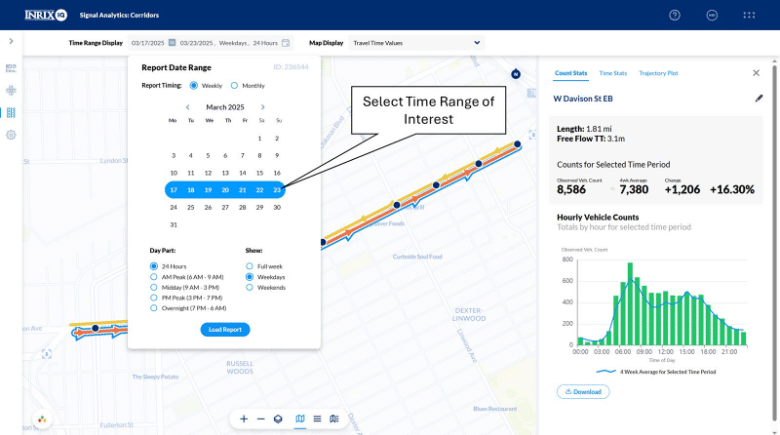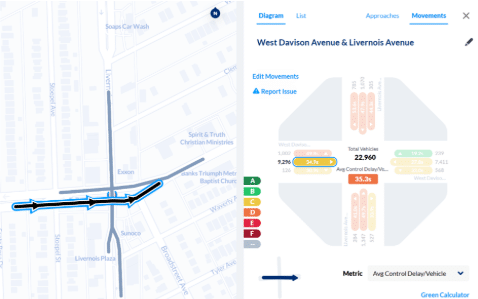
When it comes to traffic signal timing, the stakes are high. Signals are often the most visible piece of transportation infrastructure in a community—they dictate the rhythm of daily life for commuters, delivery drivers, and transit riders.
Yet, for decades, the way we evaluate and adjust their performance has remained largely unchanged: limited engineering studies conducted during peak hours, sometimes based on 24- or 48-hour counts, and often triggered by complaints or major projects.
While these traditional methods have delivered value, they come with trade-offs. Studies are resource-intensive. Infrastructure-based data collection can be costly to install and maintain. And perhaps most importantly—they offer only a snapshot in time.
The Case for Continuous Monitoring
With tools like INRIX Signal Analytics, agencies now have access to signal and corridor performance metrics 24 hours a day, 7 days a week, 365 days a year. This represents a fundamental shift in how we can think about signal operations. Instead of optimizing for just the “rush hour,” agencies can now understand how their signals are performing all the time—in the early morning, during weekend surges, and overnight when most systems are left unchecked.
For example, weekend signal timing is often based on off-peak weekday patterns. But as consumer behavior shifts—think Saturday errands, Sunday brunch traffic, or special events—these default plans may not reflect reality. Signal Analytics allows practitioners to pinpoint exactly when and where weekend delays are happening, and how they differ from weekday performance.
Likewise, overnight performance is rarely studied unless there’s a known issue. Yet data shows that midnight delays can add up due to failed detection or misaligned offsets. These inefficiencies may be small in isolation, but over time and across a network, they represent a real opportunity for improvement.
Visualizing the Power of 24/7 Data
To showcase the value of continuous monitoring, we’ve included a series of figures from Signal Analytics using data from the week of March 17 to March 23. These visuals highlight how weekday and weekend traffic patterns can differ significantly—and how easily those differences can be identified and explored using the platform.
We start with a sample intersection and corridor (Figure 1) and apply flexible time filters using the platform’s time selection tool (Figure 2). This makes it easy to isolate trends by day and time.
As shown in Figure 3, weekday travel times on the corridor follow a typical peak pattern, while weekend travel times display a different profile with a subtle mid-afternoon rise. Similar trends are visible at the intersection level in Figures 4 and 5, where control delay peaks during the AM and PM on weekdays but shifts to a mid-day pattern on weekends.
These differences—often missed by traditional methods—underscore the importance of evaluating signal performance across all days and hours. With 24/7 data, agencies can now identify and address inefficiencies that occur outside the standard rush hours, helping improve operations systemwide.



Figure 3. Corridor Travel Time over Time

Figure 4. Intersection and Movement of Interest

Figure 5. Intersection Movement Delay over Time
Aligning with Industry Best Practices
This shift toward continuous, data-driven signal management aligns with guidance from FHWA and other transportation bodies that emphasize proactive performance monitoring and data-informed decision-making. While there’s still a role for detailed field studies and infrastructure-based detection, they are no longer the only tools in the toolbox.
Final Thoughts
Traffic doesn’t just happen during peak hours. Congestion, delay, and inefficiencies can occur at any time—and now, with 24/7 probe data, so can our insights. Continuous monitoring through tools like INRIX Signal Analytics offers a scalable, cost-effective way to improve signal operations and deliver better outcomes for the traveling public—every hour of every day.




